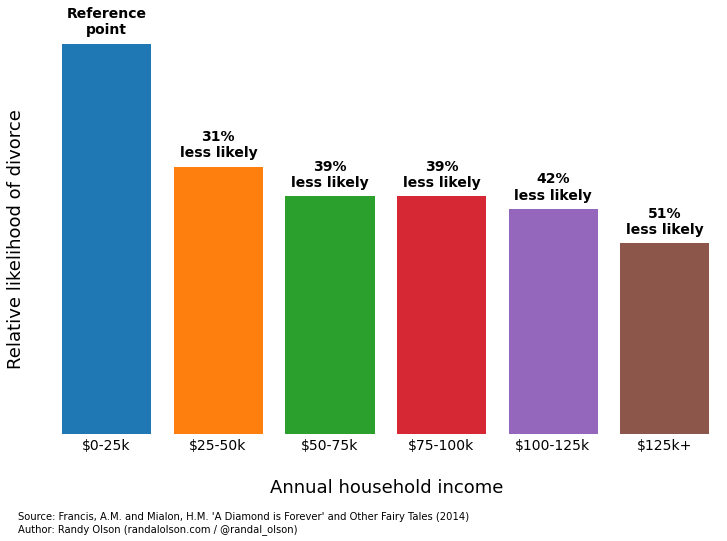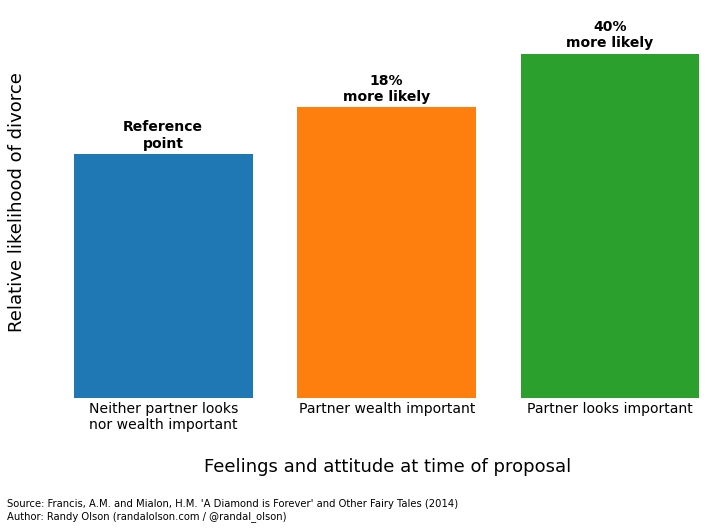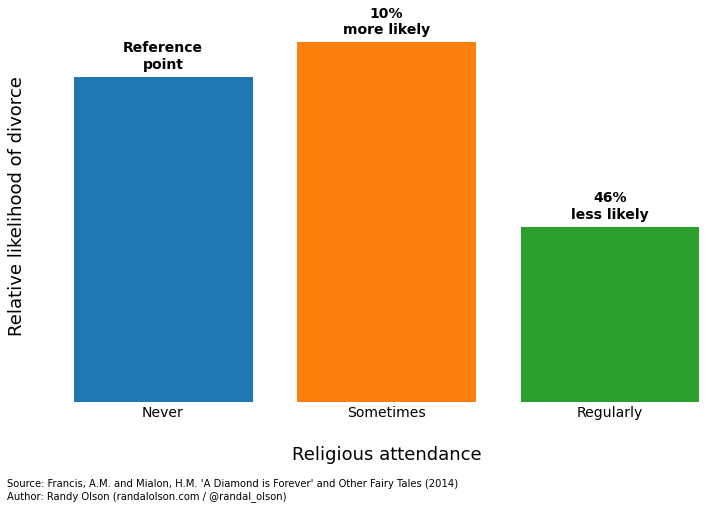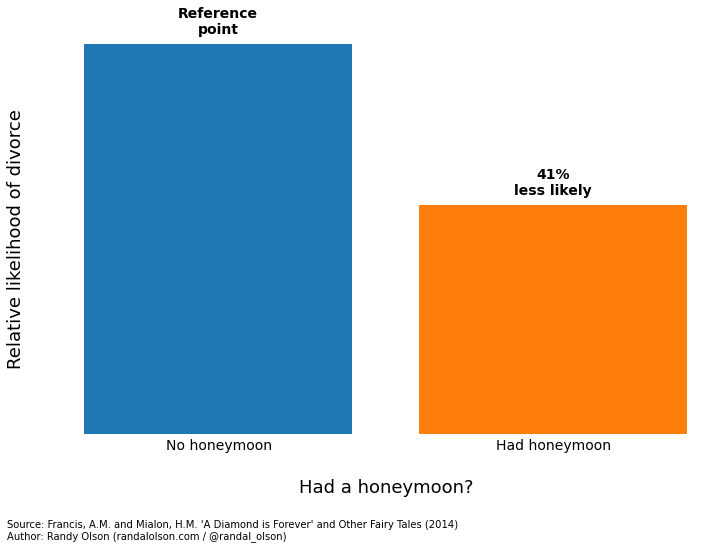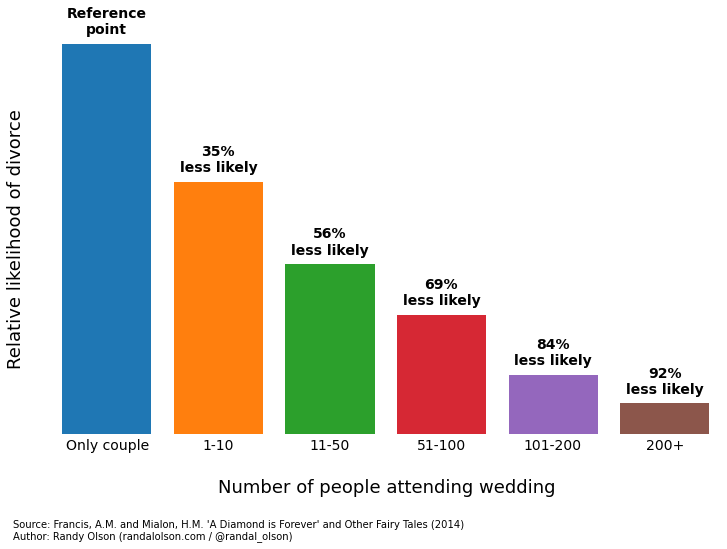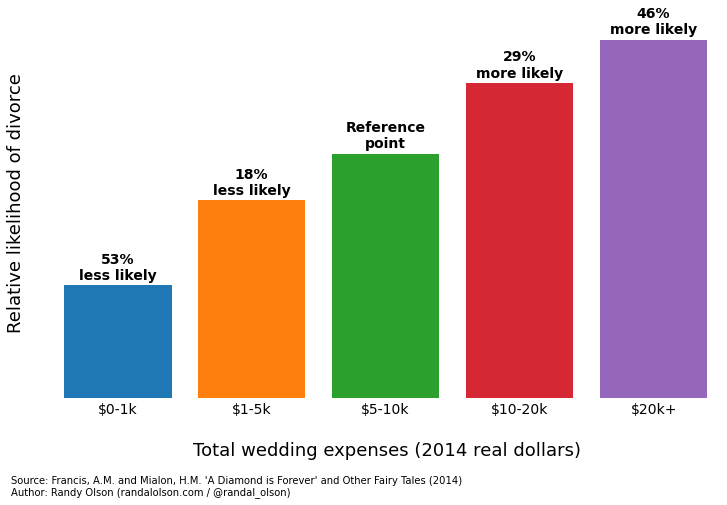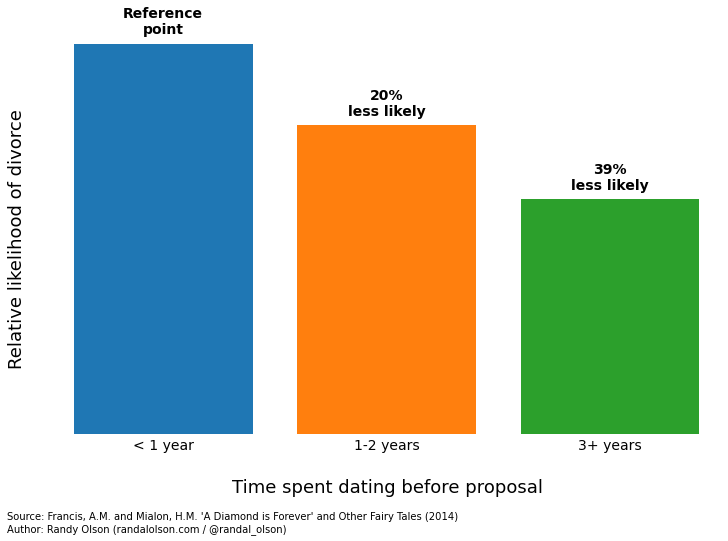Before examining these graphs, it is critical to understand how they are compared. From Randy Olson’s website, the authors state that they “chose one category as the ‘reference point.’ That means that all of the other categories are compared to that category.” This simply indicates that every percentage displayed is relative to the category marked “Reference Point.”
Household Income
The first indicator in whether or not you are more likely to have a divorce is your household income. Since money problems are often serious sources of contention in relationships, perhaps this is unsurprising. Compared to those making $0-$25,000 a year, those making more are incrementally less likely to get divorced.
Concern for Appearance and Earnings
Another factor in how likely you are to get divorced is how much emphasis you put on your partner’s earning potential and good looks. If how much your partner makes is a concern, you are 18% more likely to divorce than those who don’t care. If you are concerned with your partner’s looks, you are 40% more likely to divorce than those who don’t. More than any other, this category speaks to how vital it is to love your significant other for who they are.
Religious Attendance
Religious affiliation is also an important role in your likelihood of divorce. Compared to those who do not attend church, those who sometimes attend are 10% more likely to divorce, while those who attend regularly are 46% less likely to divorce.
Honeymoon
Having a honeymoon turns out to be much more than just a cultural tradition. Couples who have a honeymoon are 41% less likely to divorce than those who don’t.
Wedding Attendees
Similarly, those who invite large numbers of friends and family to their marriage ceremony are less likely to divorce than those who don’t include family or friends.
Cost of Wedding
On the other hand, how much money you spend on your wedding has the opposite effect. As larger numbers of people at the wedding might suggest that spending on your ceremony is a good thing, this matrix should not be ignored. Since the more you spend on your wedding actually indicates a higher chance of divorce, these two categories considered together instead suggest that large groups of genuine well wishers are more important than paying for an enormous expensive ceremony.
Length of Time Dating
Finally, the last indicator of your likelihood of divorce is how long you date your significant other before the marriage. Unsurprisingly, the longer you spend with someone before marrying, the less likely you are to divorce. While these indicators in no way reflect the health of a given relationship, they offer some insights into the best approach to marriage if you’re in a healthy relationship you hope will stand the test of time. Featured photo credit: Adrian Dreßler via flickr.com
